
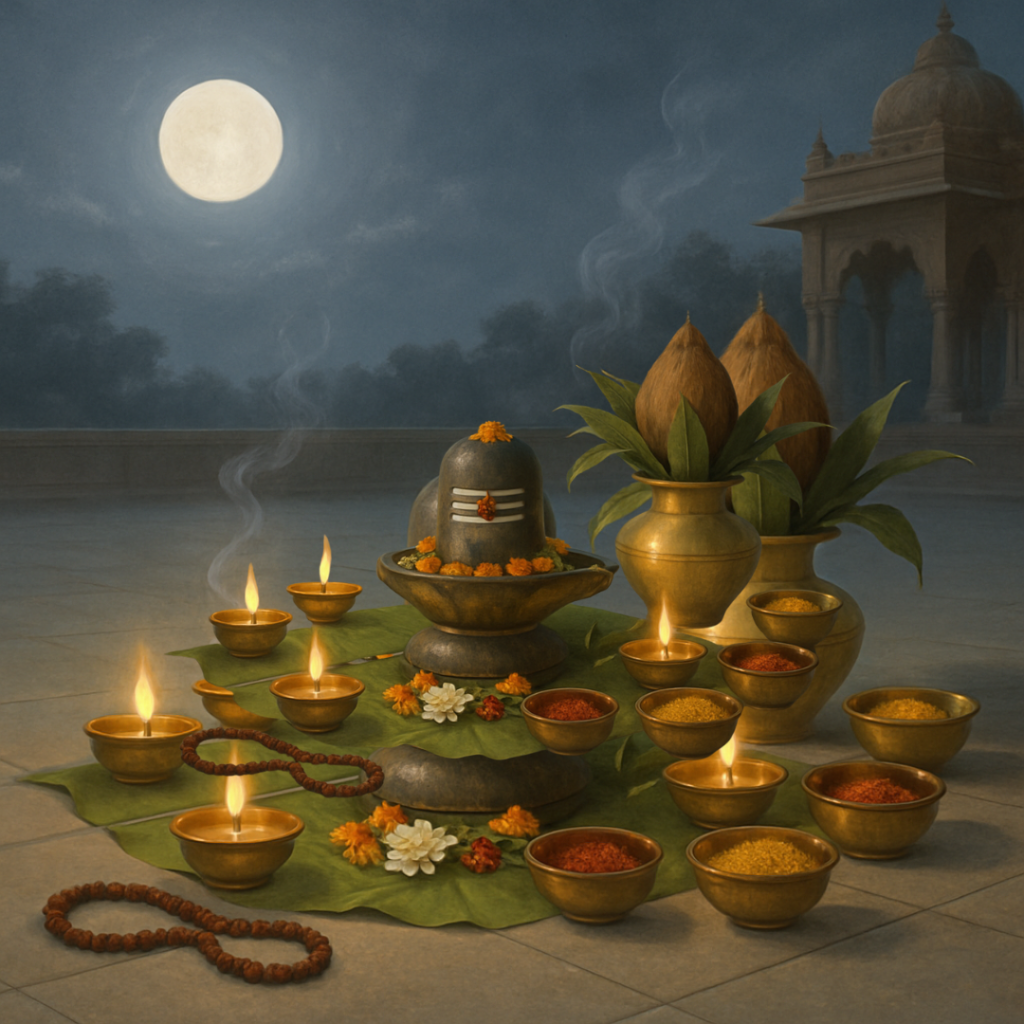
Purnima vrat (पूर्णिमा व्रत)
Purnima, also known as the full moon day, is a significant and spiritually potent day in the Hindu calendar. It marks the end of the lunar fortnight and is considered auspicious for fasting, rituals, Purnima Vrat Katha and worship. Many major festivals like Guru Purnima, Sharad Purnima, and Holi fall on this day.
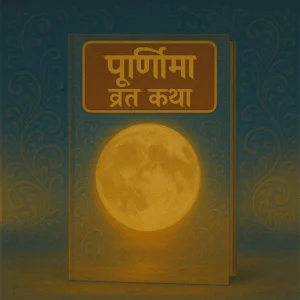
Purnima Vrat Katha (पूर्णिमा व्रत कथा)
Once upon a time, there lived a poor Brahmin and his wife. Despite their hardships, they were devout and regularly observed the Purnima Vrat (fast on full moon day). The Brahmin’s wife was especially devoted and would offer prayers to Lord Satyanarayan, an incarnation of Lord Vishnu, every Purnima.
One day, as she was performing the Satyanarayan Puja, a wealthy merchant passed by. Curious, he asked her about the rituals. She explained the significance of the Purnima Vrat and how it brings peace, prosperity, and fulfillment of desires. The merchant, desiring wealth and a child, also began observing the fast and performing the puja with faith.
Over time, he became even more prosperous and was blessed with a beautiful child. However, as years passed, he forgot to continue the vrat and became arrogant. One day, he was falsely accused and lost all his wealth. In distress, he remembered the vow he had forgotten.
He returned to the path of devotion and resumed the Purnima Vrat Katha sincerely. Soon, he regained his wealth and peace, and his life was restored. The story spread, and many others began observing the vrat, witnessing positive changes in their lives.
God Worshipped
Lord Vishnu
Day Observed
Full Moon (Purnima)
Associated Color
White or Yellow
God Worshipped
Lord Vishnu
Day Observed
Full Moon (Purnima)
Associated Color
White or Yellow
Purnima Vrat Dates of 2025
Chaitra Purnima – April 13, 2025
Vaishakha Purnima – May 12, 2025
Jyeshtha Purnima – June 11, 2025
Ashadha Purnima – July 10, 2025

Purnima Vrat Pooja Kit for Purnima Vrat
Idol or photo of Lord Vishnu/Satyanarayan
Yellow cloth (to place deity)
Panchamrit (milk, curd, honey, sugar, ghee)
Kalash with water and mango leaves
Roli, rice (Akshat), haldi, kumkum
Fresh flowers and garland
Incense sticks (agarbatti) and diya
Coconut and betel leaves/nuts
Tulsi leaves
Fruits and sweets (banana, apple, laddu, kheer, etc.)
Wheat or rice flour for drawing rangoli
Satyanarayan Vrat Katha book
Dry fruits (for prasad)
Camphor for aarti
Importance of Purnima vrat
Spiritual practices and mantra chanting
Fasting and cleansing the body
Performing Satyanarayan Katha
Gaining mental clarity and emotional balance
Donating food, clothes, and essentials to the needy
Benefits of Purnima Vrat
Brings peace, prosperity, and happiness in life.
Helps in cleansing negative energies and attracting positive vibrations.
Fulfills wishes when done with devotion and faith.
Promotes mental clarity and emotional balance.
Brings divine blessings of Lord Vishnu or the deity worshipped.
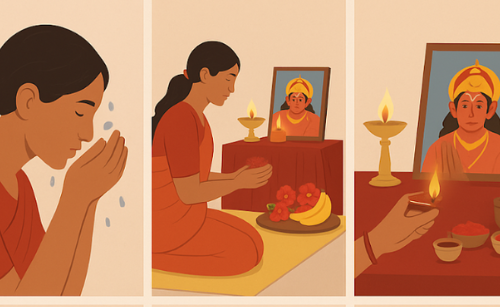
Procedure of Purnima Fast Puja
Wake up early before sunrise and take a holy bath to begin the day with purity.
Clean the house and puja area to create a sacred space for worship.
Set up the altar with idols or pictures of Lord Vishnu (or the deity for the specific Purnima).
Perform the morning puja with flowers, incense, diya, fruits, and sweets
Begin your fast, choosing from nirjala (no food/water), phalahar (only fruits), or a sattvic meal (no onion, garlic, or grains).
Spend the day in devotion, chanting mantras, reading scriptures, and maintaining a peaceful state of mind.
Perform the evening puja, including Amavasya Vrat Katha or Satyanarayan Katha or Vishnu Sahasranama, and offer prayers.
After moonrise, offer Arghya (water offering) to the full moon with folded hands and prayers.
Break the fast (Parana) the next morning after sunrise or as per the auspicious time given in the Panchang.
What is Chaitra Purnima?
Chaitra Purnima falls in the month of Chaitra (March-April) and marks the end of the Hindu lunar New Year’s first month. It holds immense spiritual importance and is associated with Lord Hanuman’s birth (Hanuman Jayanti in some regions).
Difference Between Purnima & Chaitra Purnima
Purnima is the full moon day that occurs once every lunar month in the Hindu calendar. It is considered highly sacred and is often chosen for fasting, performing pujas, and engaging in spiritual activities. Each month’s Purnima has its own religious importance and is linked to various deities and festivals such as Guru Purnima, Sharad Purnima, and Kartik Purnima.
Chaitra Purnima, on the other hand, is the Purnima that falls in the Hindu month of Chaitra, which usually occurs in March or April. It is particularly significant because it marks the end of the first month of the Hindu lunar year. This day is celebrated in many regions as Hanuman Jayanti, the birth anniversary of Lord Hanuman. It is also a popular day for performing Satyanarayan Katha and other Vishnu-related rituals.
Food Items Do's and Don'ts for Purnima Vrat
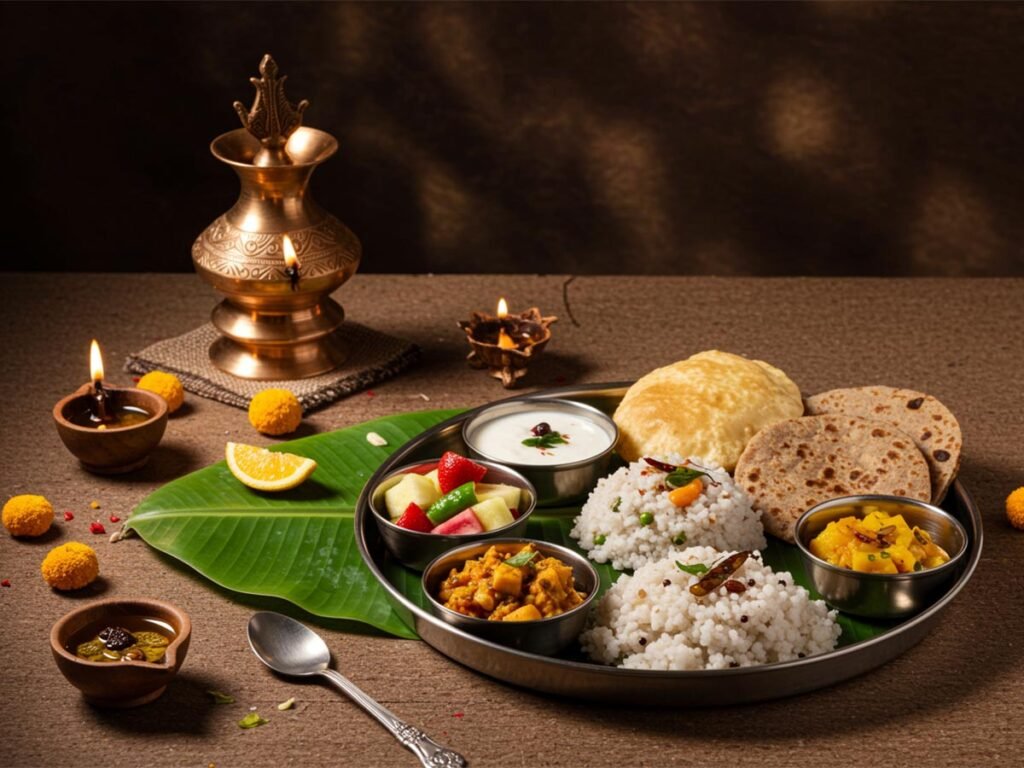
What to Eat on Purnima Vrat Items
Fresh fruits
Sabudana khichdi or kheer
Samak rice (vrat ke chawal)
Coconut water
Milk and dairy products
Nuts and dry fruits
Rock salt instead of regular salt
Food Items to Avoid in Purnima Vrat
Onion and garlic
Grains like wheat and rice (if fasting)
Non-vegetarian food
Processed or packaged food
Alcohol and caffeinated drinks
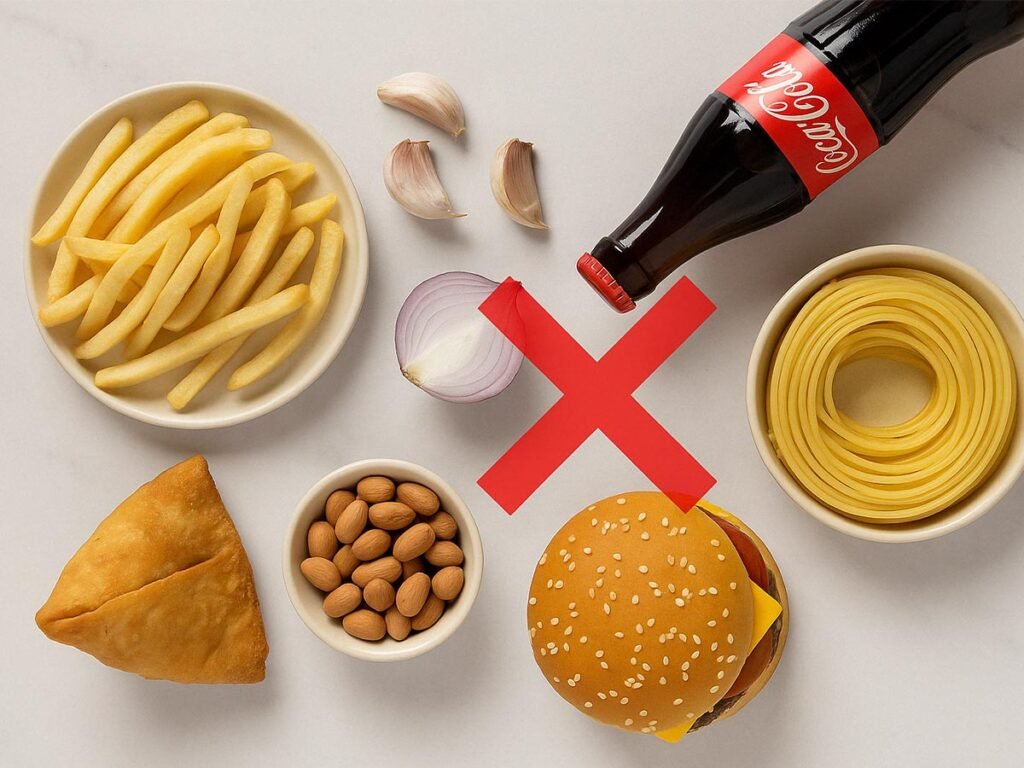
Frequently Asked Questions
Is it necessary to fast on every Purnima?
No, it’s optional but recommended for spiritual benefits.
What time should I break the fast?
After reading Purnima Vrat Katha, Parana should be done the next morning after sunrise or as per muhurat in the Panchang.
Can children and the elderly observe the vrat?
Yes, but preferably a light or fruit-based fast under guidance.
Which deity should I worship on Purnima?
Lord Vishnu is commonly worshipped; however, it may vary by region and festival.
Can I drink water during Purnima Vrat?
Yes, unless observing a nirjala (water-less) fast.